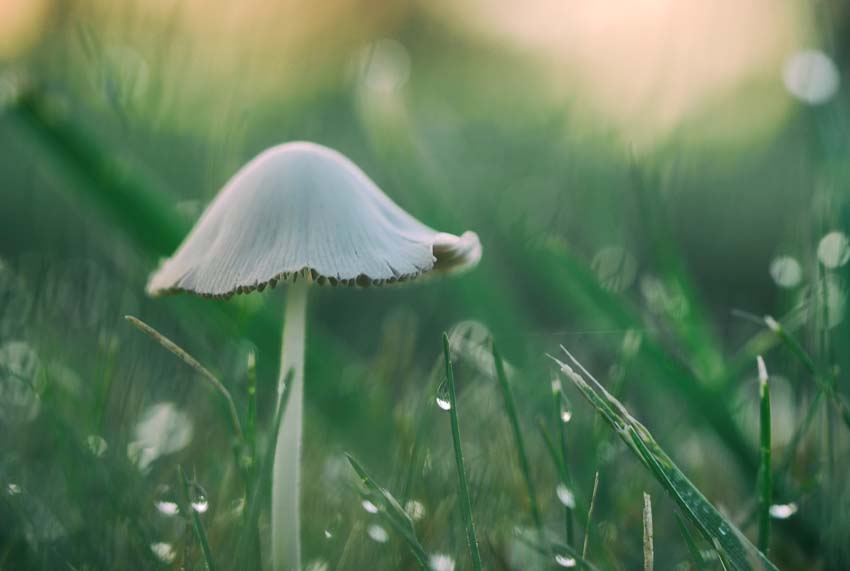A Guide to Mushroom Types, Traits, and Ways to Eliminate Them from Your Lawn
When you find mushrooms on your lawn, it’s a sign that nature is at work. Although mushrooms are usually harmless and disappear as quickly as they arrive, if you have a mushroom problem, it’s important to know what causes them. In this comprehensive guide on how to get rid of mushrooms, you’ll learn about these annoying fungi and how to keep them out of your beautiful yard.
What Causes Mushrooms in the Lawn?
Mushrooms occur in wet and humid lawns, so you’ll often notice them growing if it rains heavily or you’re over-watering your lawn. They grow on woody materials like old roots, dead leaves, or bark, and since they are one of the few organisms that decompose woody material, they are usually beneficial.
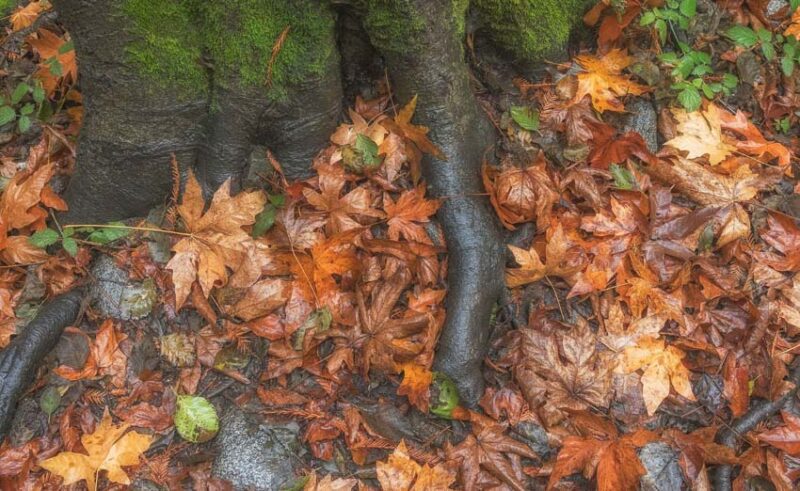
Shady areas of your yard are more susceptible to mushrooms, and you can often find them growing around tree roots. Mushrooms will appear on any organic material that has been allowed to sit, like piles of compost, grass clippings, and pet waste. They also thrive if your lawn has heavy thatch buildup.
Once mushrooms start growing in your yard, they release spores, which leads to more fungal growth. They’ll continue growing as long as the conditions are favorable for mushroom growth.
Fungi and the Mushroom Lifecycle
Mushrooms are unique organisms, and they have an equally interesting lifecycle. Some mushrooms in lawns complete their entire lifecycle in less than 24 hours, and because they aren’t visible for most of their lifecycle, it seems like they suddenly appear out of nowhere.
The mushroom lifecycle begins with a spore germinating under favorable conditions. Next, thread-like fibers called hyphae are made up of tiny mycelium , and they start to branch out from the spore to create a tangled mat of growth.
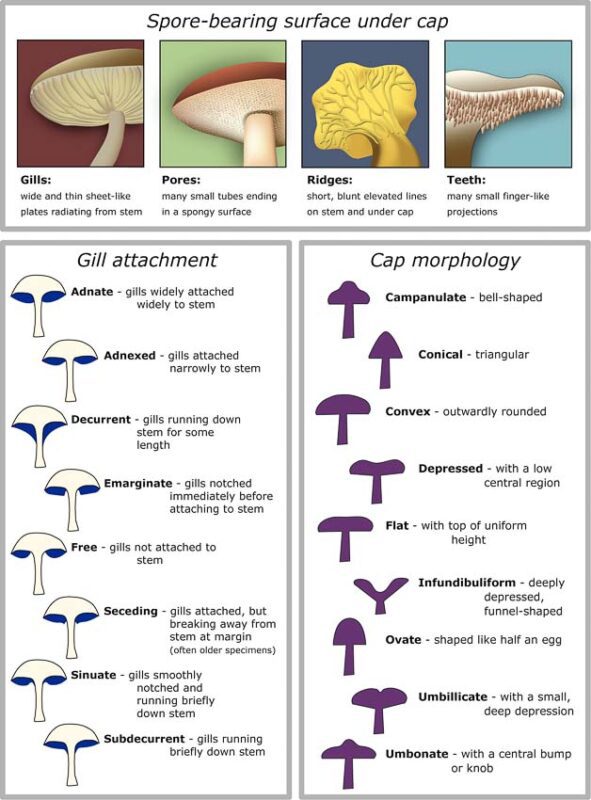
As the hypha spread, they release enzymes that break down organic matter into nutrients they absorb.
As long as conditions allow, the hypha will keep spreading until a spore of the opposite sex is encountered. Once the two genders of hypha meet, they wind around each other, creating a hyphal knot.
At this point, sexual reproduction occurs, and both spores contribute genetic material to produce a new mushroom.
As the mycelia continue to break down organic matter, all the nutrients go toward the exponential growth of the fruiting body, which is the mushroom we see on the ground. Finally, at the end of the mushroom lifecycle, spores are released from the mature fruiting body, and the cycle repeats from there.
Environmental Factors that Contribute to Mushroom Growth
Mushrooms need a substrate, and they usually occur in lawns where soils are rich in organic matter. They grow on substrates like wood, straw, sawdust, woodchips, manure, and compost.
In addition to having a suitable substrate, the most significant environmental factors that affect mushroom growth are moisture, temperature, and pH levels.
- Moisture–Mushrooms require a lot of moisture and often grow after it rains heavily. They usually appear 5 to 7 days after heavy rainfall.
- Temperature–Most mushrooms thrive in temperatures between 50-70°F (10-21°C), but some prefer colder temperatures.
- pH–Mushrooms prefer a slightly acidic substrate, with a pH of about 5.0 to 6.5. Studies have shown that fungal growth increases as pH levels go down to about 4.5. Below that, fungal growth decreases.
Are Mushrooms Dangerous to Kids or Pets?
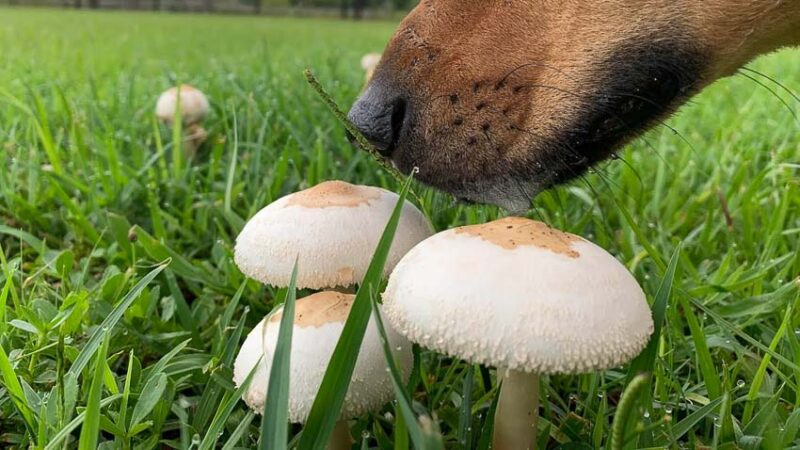
Some mushrooms are dangerous to kids and pets, and it’s important to be able to identify them.
The Risks of Mushroom Exposure for Humans and Animals
While most mushrooms in your lawn are harmless, some of them are toxic enough to kill children and pets. Most mushroom poisonings are inadvertent and occur in children under the age of six, so it’s important to teach children about the dangers of mushrooms at an early age.
Treating all mushrooms as poisonous is best because you don’t have to worry about which ones are edible if you avoid them all.
Symptoms of mushroom toxicity vary depending on the type of mushroom. Gastrointestinal problems like stomach cramps, vomiting, nausea, and diarrhea are common signs of exposure.
Respiratory and heart problems may also occur. Mushroom toxicity can also result in liver failure, kidney failure, and severe neurological problems.
Prompt treatment is critical, so if you notice any symptoms and suspect a child or pet has eaten mushrooms, you must go to the emergency room or vet immediately. If possible, bring a mushroom specimen with you for identification purposes.
Budget for beauty with our Guide to Lawn Care Cost!
Are Mushrooms Bad for Your Lawn?
Mushrooms are a sign of healthy soil, and they are almost never bad for your lawn. However, there are a few instances where mushrooms can be toxic to your grass and damage your lawn.
The Impact of Mushrooms on Lawn Health
Even though mushrooms in a lawn are unsightly, they are almost always beneficial. Their appearance indicates that your soil is rich in organic matter.
They play a significant role in soil health and nutrient cycling by breaking it down. Mushrooms disappear on their own as soon as conditions become unfavorable for fungal growth, usually when the sun comes out.
The Role of Mushrooms in Soil Health and Nutrient Cycling
During the lifecycle of a mushroom, the mycelia decompose organic matter in the soil. This decomposition makes nutrients readily available to plants and improves the overall health of your soil.
In addition, with the help of enzymes, fungi help balance carbon and nutrients by turning organic matter into biomass, organic acids, and carbon dioxide.
Mushrooms increase the availability of nitrogen and phosphorus, two of the most important nutrients for your lawn. They also work together with plants to capture carbon from decaying matter and store it in the soil, and they can absorb toxic metals.
Fungi That Damage Your Lawn
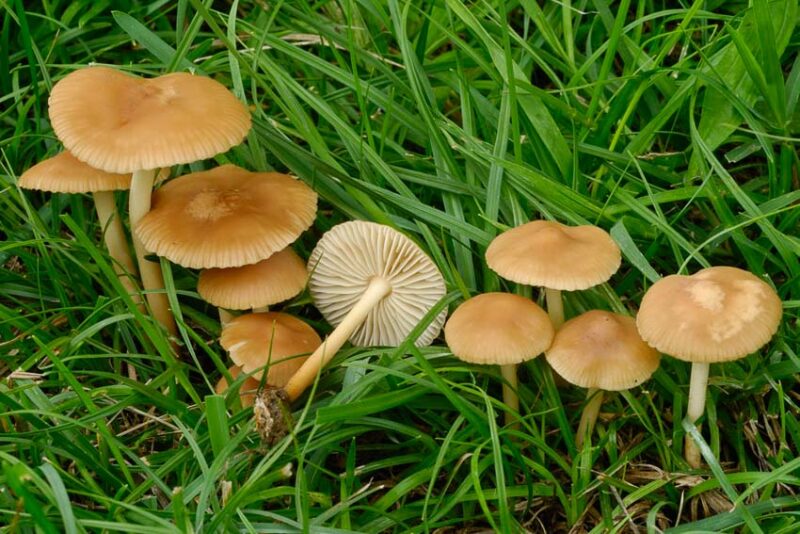
While most mushrooms are harmless, fairy rings can damage your lawn.
Fairy rings usually occur in older lawns with large amounts of organic matter in the soil or areas where trees once grew. They appear in a circular shape, arc, or half-circle and can be several feet wide.
Fairy ring fungi don’t attack the grass. Instead, they grow on the substrates in the soil and create conditions that can damage or kill your lawn. These fungi are separated into three types.
- Type I–This type causes the most damage and appears as a ring of dry, dead grass that repels water.
- Type II–This fungus releases excess nitrogen in the soil, causing the grass to grow faster. It appears as dark green rings of grass.
- Type III–Rings of fruiting bodies appear above ground but don’t harm your lawn.
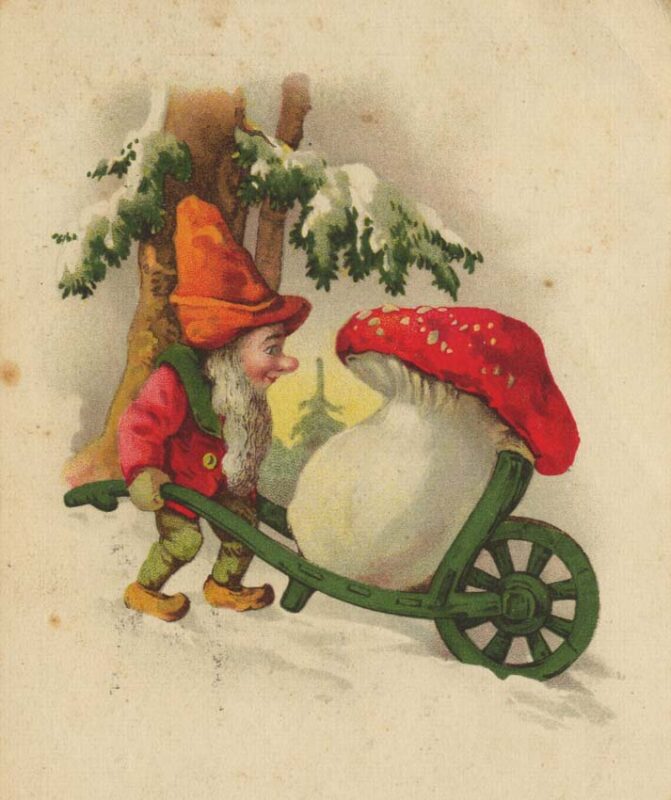
Getting rid of fairy rings is difficult because this type of lawn fungus often reestablishes itself. After you get rid of fairy rings, you must take preventative measures to keep them from returning.
People often find Type III fairy rings charming and leave them alone.
Methods to Get Rid of Mushrooms
Adding organic matter improves the structure of your soil and provides important nutrients for your lawn, but it also attracts organisms like mushrooms. If they are a problem, there are several methods you can use to get rid of mushrooms in your lawn.
Natural Methods for Removing Mushrooms
Mushroom removal can be accomplished without the use of chemicals. The following natural methods for removing mushrooms are effective:
- Dish soap–Solutions made with dish soap and water won’t harm your grass and work remarkably well to kill mushrooms in lawns by stopping the growth of the hypha underneath the soil. Mix two tablespoons of dish soap into two gallons of water and pour or spray on the areas where mushrooms grow.
- Baking soda–Mix two tablespoons of baking soda in a quart of water and pour it on the affected areas, or sprinkle baking soda directly on the mushrooms before watering. This method works by raising the pH level.
- Vinegar–Mix five tablespoons of vinegar in a gallon of water and use a pump sprayer to soak areas where mushrooms are a problem. Vinegar has a pH of about 2.0 to 3.0 and is a natural fungicide.
- Pull them by hand–Before they can release spores, pull mushrooms by hand to keep them from reproducing.
Chemical Methods for Removing Mushrooms
Stubborn patches of fungi that are causing damage to your lawn, like fairy rings, might call for a stronger approach like a fungicide. Just be aware that fungicides also kill beneficial organisms in your soil, so they should only be used if natural methods are unsuccessful.
How to Prevent Mushrooms from Growing in the Future
Consider letting mushrooms grow if they aren’t harming your lawn. They improve the soil and help root systems access nutrients and water. However, if mushrooms bother you, you can take steps to prevent them from growing in the future.
Tips for Preventing Mushroom Growth
Consider the environmental factors that encourage mushroom growth and take action to make conditions less favorable.
- Reduce watering–Moisture plays a significant role in fungal growth, and one of the first indicators of over-watering is the appearance of mushrooms. Over-watering can lead to other types of lawn disease, and you should ensure your lawn has proper drainage by adding French drains to areas with standing water.
- Dethatch your lawn–Mushrooms thrive with heavy thatch buildup and low nitrogen levels because thatch provides a substrate for fungal growth. So if you notice a lot of mushrooms, it’s time to dethatch your lawn, bag your clippings, and use a nitrogen fertilizer.
- Remove organic matter–Don’t let organic matter like pet waste or clumps of grass clippings sit on your lawn. Remove all types of organic matter in your soil, like dead tree roots, whenever possible. When you add compost to your lawn, pull out any large chunks of wood that you find.
- Aerate your lawn–Lawn aeration improves water drainage and air circulation and is one of the best natural methods for mushroom removal.
- Mowing–If there are too many mushrooms to pull by hand, you can mow mushrooms to keep them from releasing spores. You can also cut your lawn shorter for a brief period to help it dry out faster.
Best Practices for Lawn Care and Maintenance
Proper lawn care will help prevent mushroom growth. Early morning is the best time to water grass because it allows the water to soak into the roots but gives the grass time to dry, making it less susceptible to diseases and fungi.
Without the proper nutrients, your grass is more vulnerable to all types of disease.
Test your soil to correct any nutrient imbalance before it becomes a problem. A test will also help you determine if you should lime your lawn to boost the soil pH.
Frequently Asked Questions About Mushrooms in Your Yard
How Do I Know If a Mushroom is Poisonous?
Mushroom identification is tricky. White gills are a common feature of poisonous mushrooms, but the only way to tell if a mushroom is safe is to consult a mushroom expert or mycologist.
Can I Eat Mushrooms Growing in My Yard?
To be safe, you should treat all mushrooms that grow in your lawn as poisonous. Do not eat them without the advice of a mycologist. Keep them away from pets and children.
Can I Mow Over Mushrooms?
You can mow over mushrooms, but it’s better to pull them up and dispose of them. However, mowing over them is preferable to letting them mature fully and release their spores.
Should I Water My Lawn Less to Prevent Mushroom Growth?
One of the first signs you’re over-watering your lawn is mushroom growth. Over-watering can lead to other diseases, like root rot, so you should cut back if you have a lot of mushrooms growing in your lawn.
Will Removing Mushrooms Cause Them to Spread?
Removing mushrooms before they release their spores keeps them from spreading. They will create new mushrooms if they can fully mature and complete their lifecycle by releasing spores.

